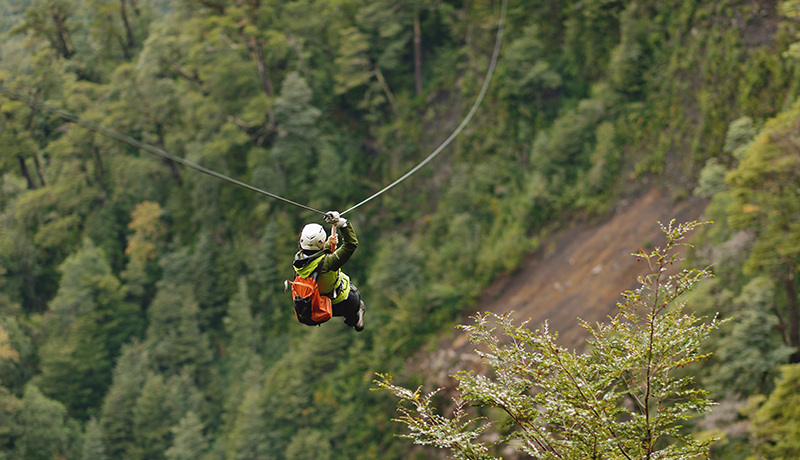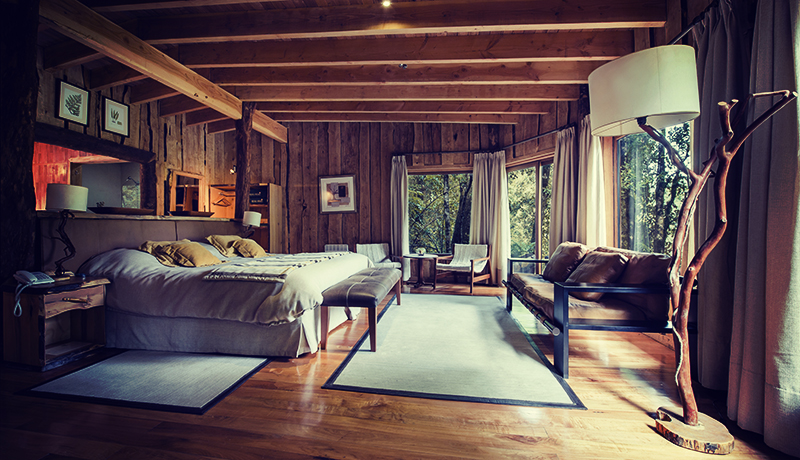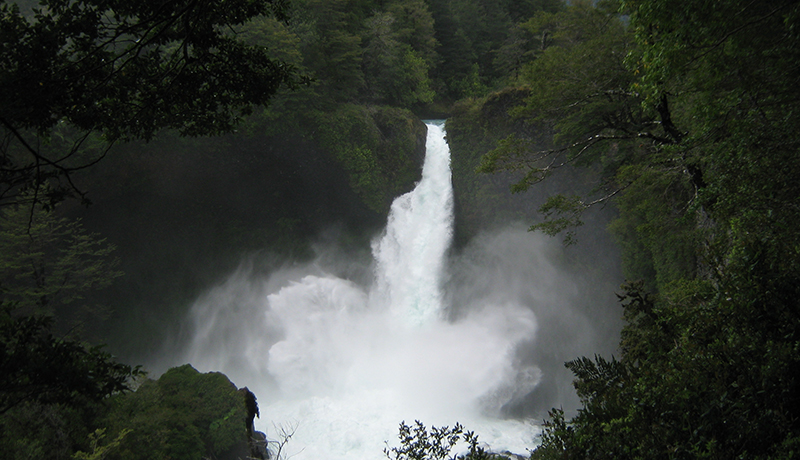

Nawelpi Lodge, Photo Credit: Huilo Huilo Nature Preserve
When the Huilo Huilo Nature Reserve first opened in Chile’s scenic Lake District south of Santiago, its original lodge, the unusual tree-covered Montaña Mágica, carved of volcanic rock and rising like a hobbit house out of the forest, quickly took its place on many travelers’ bucket lists.
Now, this privately owned nature reserve, which a Chilean mining magnate established in the shadow of two snow-capped volcanoes, has built a group of high-end villas, with a dedicated concierge for guests, who will organize your hikes and other excursions through this 300,000-acre preserve of waterfalls, wooded trails and wildlife.
A popular weekend getaway for Santiago residents, Huilo Huilo still sees relatively few international visitors. Here’s what you need to know to plan a trip to this secluded eco-tourism destination in one of South America’s still-undiscovered regions.
Getting there
To reach the Huillo Huilo Nature Reserve from Santiago, fly to either Temuco or Valdivia; it’s an easy 90-minute hop to either city. Huilo Huilo staff can book a car and driver for the scenic 2.5-hour drive between either of these airports and the reserve.
Tip: Arrange for your driver to stop off en route to the reserve at the Termas Geométricas, a remote natural hot spring, for a soothing soak in the outdoor pools — a perfect start to your Chilean eco-escape.

Zip-lining Excursion, Photo Credit: Huilo Huilo Nature Preserve
Where to stay
A resort complex at the center of the reserve houses three of Huilo Huilo’s four hotels, as well as restaurants, indoor-outdoor pools, several hot tubs set in the gardens and a spa, where the sauna overlooks the forest.
But for a true escape into nature, book the reserve’s Nawelpi Lodge, a collection of upscale cottages secluded in the woods.
These 12 spacious suites literally have been carved out of the forest, with tree trunks and wooden beams supporting the structures. While the cottages are just a 10-minute walk from the main buildings, they feel miles away. Outfitted with king beds, whirlpool tubs and wood-burning fireplaces, they also feature sheltered decks with lounge chairs overlooking the Fuy River.
A short walk from the cottages is a private lodge for Nawelpi guests, with a bar and lounge above the river. You can enjoy your meals here, too, in an open and airy space with a swooping wooden ceiling. Breakfast is either served in the lodge or delivered directly to your suite, where you can have your eggs, fresh fruit, pastries and coffee in bed, if you’d like.
In the evening, the Nawelpi chef prepares elaborate multi-course meals, featuring local game and other regional products, accompanied by a selection of Chilean wines.

The Reserve’s Wondrous Waterfall, Photo Credit: Huilo Huilo Nature Preserve
Exploring the reserve
The Nawelpi Lodge concierge staff, a husband-and-wife team who speaks fluent English, can help plan your time on the property and arrange guides for hikes and other activities. Several waterfalls, including Huilo Huilo, Puma and La Leona Falls, are all scenic destinations for an excursion into the reserve.
For a more adventurous way to explore the rainforest, book a canopy tour on the reserve’s complex of zip lines, which are among the longest and highest in South America, soaring nearly 300 feet above the forest floor.
Huilo Huilo is working to repopulate an endangered species of deer, known as the huemul. In 2016, staff released the first five animals back into the wild. While the huemuls’ breeding grounds are not open to the public, you can visit a deer park on the property where numerous South Andean red deer graze in the verdant vegetation. Nearby, the reserve even has its own microbrewery, where you can stop in for pizza and samples of its brews.
Following the path of the spirits
Chile’s Lake District is home to one of the country’s largest groups of indigenous Mapuche people. To learn more about Mapuche culture, visit the secluded sculpture forest on the reserve grounds, known as the Sendero de los Espíritus (Path of the Spirits), where local artist Eugenio Salas has carved more than two dozen wooden totems and figurines inspired by traditional Mapuche legends.
Walk through the sculpture forest on your own or ask the concierge to arrange for a guide who can explain more about the works and their stories.
